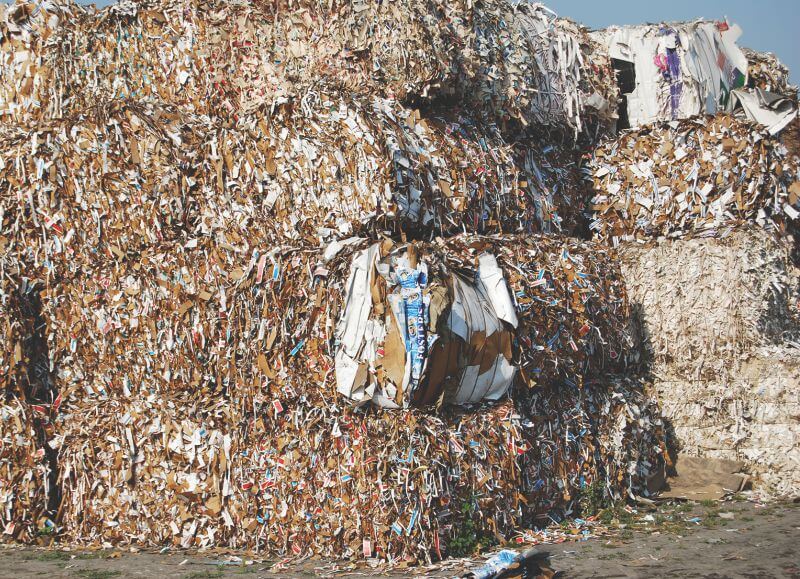
The deliberations that took place at the recently concluded European Paper Recycling Conference are quite worthwhile to note for the Indian buyers of recovered paper from the western world.
The Macro situation
• The overall economic condition still remains very uncertain.
• GDP growth rates are extremely low with few of the countries in the Euro Zone expected to record zero growth.
• Private debt in northern Europe and Public debt in Southern Europe remain very high.
Effects on Paper Industry
• These are adversely affecting the paper industry in Europe and the US.
• ROI of US & European paper mills is heading southward.
• Graphic paper demand likely to get reduced from 45.1% in 2008 to 42% in 2020.
• Reduction in Newspaper ads from 31% to 21% and increase of E-ad from 3% to 14%, slowing down Newsprint industry growth.
• Paper export, especially coated woodfree from Europe reduced to nil.
• Import of packaging grades from non Euro Zone getting increased.
• Necessitating shutting down of additional paper capacities in Europe to restore the demand supply equilibrium.
Effects on Recovered Paper Market
• Demand supply mismatch, has led to lesser generation of recovered paper. (Currently Europe collects about 60 million tonnes of recovered paper)
• Lesser generation is forcing Europe into higher recovery of paper (present recovery being 72.2%, against target of 66% for the period 2006- 2010).
• However, higher recovery in its turn is leading to higher cost, pushing up recovered paper prices.
• Less generation, higher cost of collection, are also leading to:
a. elimination of single street collection (single street collection has decreased from 70% to 45-55%),
b. increase of co-mingled collection (UK has highest co-mingled collection),
c. lesser fibre yield,
d. higher contamination,
e. quality differences, arising out of different methods of collection in different countries of the Euro zone,
f. return of large paper mills in setting up of mill owned recovered paper depot facilities increasing pressure on independent suppliers.
• However, South European countries like Spain, Italy, Greece etc would still have surplus recovered paper available
Challenges for Recovered Paper Users
• Consequent upon lesser generation and higher cost of collection, base prices for all grades of recovered paper will get pitched at higher levels. Earlier historical price bands will no longer be valid.
• Multi-street, co-mingled collection will require better deinking facility for processing the recovered paper.
• Will also require ability on the part of the paper mills to handle recovered paper with newer packaging material and novel kinds of barriers.
• Examples like presence of more brown grades in mixed paper and presence of more OCC in news & pams; will be more frequent.
• In addition to better deinking; mills will require improved equipment support for sorting the higher contaminants in the incoming recovered paper.
• Mills will need to look for alternatives, non-traditional grades of recovered paper; for conversion into finished paper (Kimberley Clarke looking at kraft/news & pams for making tissue paper).
In the coming days, fight for limited fibre can only become more intense and survival will rest upon innovation in terms of sources of supplies, identification of grades, usage of technology and practical approach. One can no longer look at recovered paper for recycling as ‘Waste Paper’ as this will be the main source of fibre for large number of mills in the northern hemisphere.
Few other trends worth noting:
In order to get a feel of the market trend and the direction it is likely to take; it may be interesting to note few features, as follows :-
•Germany has turned into a nett importer of recovered paper (import 300,000 MT) in 2010, from nett exporter (export 600,000 MT) in 2009.
• Consequent upon increased demand for recovered paper in the Euro Zone and in the US; aggregate export of recovered paper from Europe and the US to Far East, Oceania & others have fallen in the Jan-Jun 2010.
– from 927,000MTto 683,000MTex Europe
-from 1,313,000MTto 1,169,000MTex US
• According to RISI, OCC will remain on the upward track, till 2012, as demand will continue to be stronger than generation.
• The price of mixed paper will overtake the 2008 level by 2011.
• ONPwill reach the peak in 2012.
• The price forecast upto 2012 from the US and Europe also show a rising trend:-
– from US 12% – 19% increase depending upon the grade
– from Europe 16% – 35% depending upon the grade and the country of origin within the Euro Zone.



